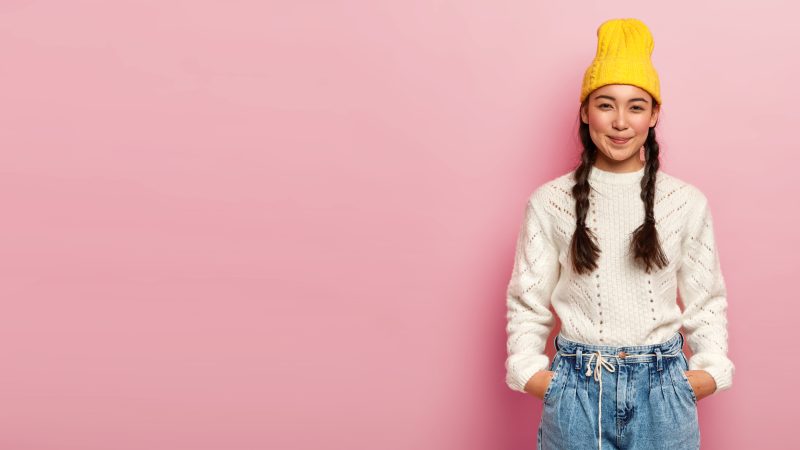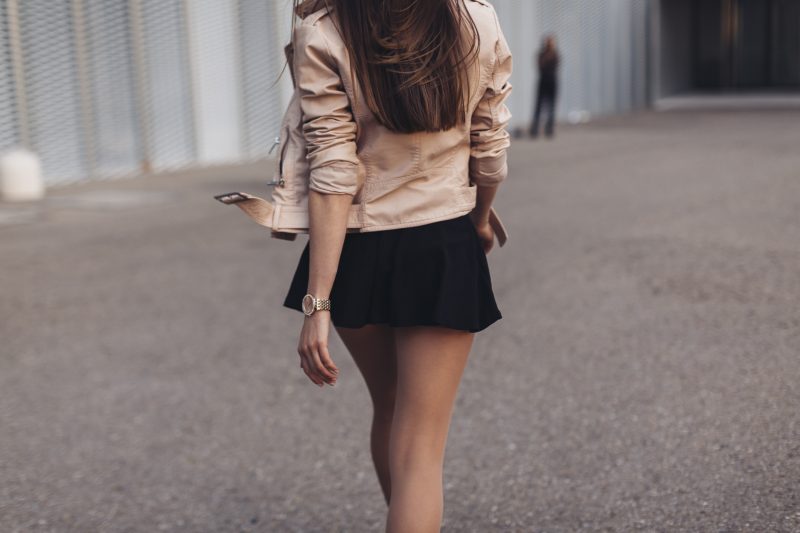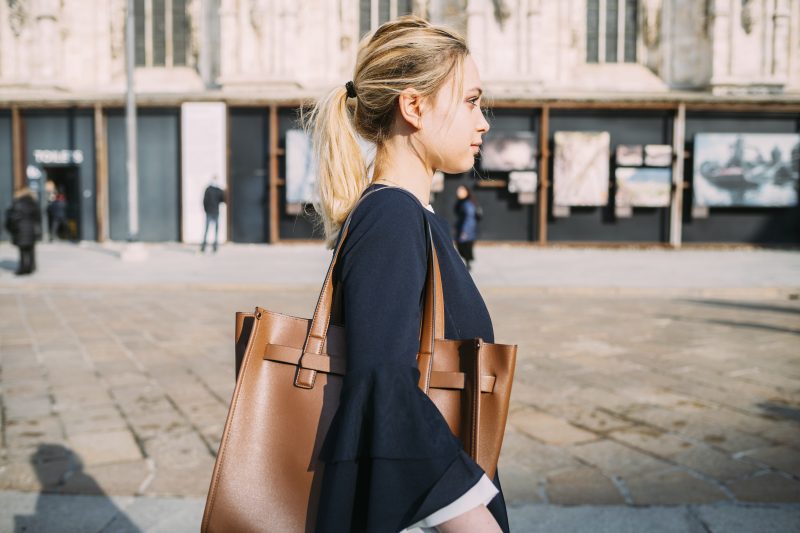I knew I’d officially aged out of youth culture the day my 19-year-old intern Zoe walked into the office wearing what appeared to be at least three different outfits simultaneously. There was a tennis skirt layered over baggy jeans, topped with both a tight graphic baby tee AND an oversized men’s button-down, finished with chunky loafers that looked like they weighed more than my laptop. The whole ensemble was capped off with a beanie—in July. In New York. Where it was 87 degrees at 9 AM.
“That’s… a look,” I said, immediately hating how I sounded exactly like my mother circa 2004 when I went through my layered tank tops and low-rise jeans phase. Zoe beamed at me and said, “Thanks! It’s very ‘blokecore meets balletcore with some weird girl thrown in.'”
I nodded sagely while making a mental note to Google whatever the hell “blokecore” was the second she left my office.
I’ve spent the last decade as a fashion editor priding myself on keeping up with the ever-accelerating trend cycle, but something seismic has happened in the last few years. The generational style gap between millennials (like me, an elder millennial approaching 40 with increasing velocity) and Gen Z has become a chasm so wide you could fit every pair of skinny jeans ever manufactured into it.
The trend that’s causing the biggest disconnect? “Chaotic layering”—a deliberately haphazard approach to getting dressed that looks like someone put on every trend from the last 30 years simultaneously. Tennis skirts over jeans. Dresses over pants. T-shirts over long sleeves over other T-shirts. Leg warmers with mini skirts. Ballet flats with tube socks. The combinations aren’t just unexpected—they’re deliberately jarring, like someone raided a thrift store blindfolded and then wore everything they grabbed all at once.
When I first noticed this trend emerging on TikTok, my initial reaction was pure millennial confusion. We were raised on “What Not to Wear” and fashion magazines with “Fashion Don’ts” sections that hammered home clear style rules: create a clear silhouette, don’t mix too many patterns, ensure your proportions are “flattering” (whatever that means). We internalized these rules so deeply that many of us still stand in front of our closets paralyzed by outdated style commandments.

Meanwhile, Gen Z grew up with social media algorithms serving endless visual inspiration without context or rules. They’ve never known a world where fashion was dictated from on high by a handful of magazine editors. Instead, they draw inspiration from anime characters, K-pop stars, gaming aesthetics, and TikTok micro-trends that flare up and burn out within weeks. Rules aren’t just meant to be broken—they’re irrelevant artifacts from another time.
My turning point came during a particularly heated editorial meeting about fall trends. My colleague Marcus (41, devoted minimalist, still not over the death of Phoebe Philo’s Céline) was ranting about a Gen Z celebrity who’d been photographed wearing knee-high boots with basketball shorts. “It makes no functional sense!” he kept saying, growing increasingly agitated. “It’s hot weather clothes with cold weather shoes! It’s sportswear with fancy footwear!”
And suddenly it hit me: that’s exactly the point. The appeal of chaotic layering isn’t about making functional sense—it’s about the deliberate subversion of fashion logic. It’s a visual middle finger to the algorithmic sameness that has dominated our Instagram feeds. While millennials are still posting flat lays of neutral capsule wardrobes, Gen Z is intentionally dressing like they fell through a temporal wormhole where Y2K, the ’70s, and some unnamed cyberpunk future collided.
To better understand this trend rather than just gawk at it, I decided to go straight to the source. I took Zoe to lunch and grilled her about her approach to getting dressed. Between bites of her grain bowl (some things transcend generational divides), she schooled me on what I’d been missing.
“The whole point is that it’s not supposed to make sense to everyone,” she explained, with the patient tone of someone teaching a toddler to use a spoon. “If my mom thinks an outfit looks good, I know I’ve failed.” When I asked about her process, she shrugged. “I usually start with one piece I really like, then I add stuff that creates tension with it. Like, if I’m wearing something feminine, I’ll add something sporty or masculine. If something’s tight, I’ll put something baggy over it.”
What struck me was the intentionality behind what looked, to my millennial eyes, like chaos. This wasn’t random—it was calculated disruption. When Zoe paired a delicate vintage slip dress with chunky hiking boots and a baseball cap, she wasn’t being haphazard. She was creating visual dialogue between disparate elements.
I decided to conduct a social experiment by attempting chaotic layering myself. On a Tuesday when I had no important meetings (I’m not completely reckless),
I channeled my inner Gen Z. I layered a floral prairie dress over jeans, added a graphic tee on top, threw on a crochet vest, and finished with combat boots and multiple necklaces of different lengths.
Looking in the mirror, I felt simultaneously ridiculous and strangely liberated.
Walking into the office was a study in generational reactions. My millennial colleagues gave me concerned glances, with Emma mouthing “Are you okay?” across the conference room. But the editorial assistants and interns? They were over the moon. “You ate,” declared our 22-year-old social media coordinator, which I’ve learned is high praise indeed. Zoe gave me a solemn nod of approval, then suggested I add arm warmers next time. (There was not going to be a next time, I thought. Reader, there was absolutely a next time.)
What I discovered during my week of dressing chaotically was that the appeal goes beyond aesthetics—it’s about freedom from constraints. There’s something genuinely liberating about putting together an outfit that deliberately contradicts everything you’ve been taught about “flattering” dressing. When you wear a baby tee over a button-down with a skirt over pants and somehow don’t look like a total disaster, you start questioning what other rules are similarly breakable.
The millennial approach to fashion has largely been about finding our “personal style”—a consistent, recognizable aesthetic that becomes our signature. We’re the generation of capsule wardrobes and “investment pieces” and finding the perfect white t-shirt. There’s nothing wrong with this approach (I still believe everyone should own at least one perfectly tailored blazer), but it assumes style is something fixed that you discover once and then maintain indefinitely.
Gen Z rejects this premise entirely. For them, personal style is fluid, contextual, and constantly evolving. My intern has a different aesthetic every day—cottagecore on Monday, cyber-Y2K on Tuesday, normcore on Wednesday. This isn’t indecision; it’s intentional style exploration. Fashion isn’t about finding your signature look—it’s about using clothes as a form of creative expression that changes with your mood, your influences, and yes, the trends you’re absorbing through your phone screen at lightning speed.
But here’s where I think many of my fellow millennials are missing the point: chaotic layering isn’t about looking conventionally attractive. It’s about looking interesting. When I asked Zoe if she worried about whether her outfits were flattering, she looked genuinely confused. “I mean, I like how I look in them,” she said. “But I’m not really dressing for other people to think I look hot.” The freedom in that statement floored me. How many outfit decisions have I made based on whether something made my arms look good or created the “right” silhouette?

After two weeks of immersing myself in chaotic layering (to varying degrees of success), I’ve come to appreciate what this trend represents beyond its surface eccentricity. It’s a visual representation of Gen Z’s approach to identity itself—fluid, multifaceted, contradictory, and unconcerned with external validation. They’re the generation that grew up with more options and fewer certainties than any before them. Of course their fashion reflects that.
Does this mean I’ll be permanently adopting the full chaos in my daily wardrobe? Probably not—I still have too many deeply ingrained millennial fashion neuroses to fully surrender to layering with abandon. But I have started incorporating elements of this approach, giving myself permission to create unexpected combinations and worry less about conventional “rules.”
Last week, I wore a slip dress over jeans to an industry event, finishing the look with chunky loafers instead of my usual heels. When a colleague (millennial, naturally) asked why I was dressed “like that,” I found myself channeling Zoe’s nonchalant confidence: “Because it’s more interesting this way.” And you know what? It was.
The generational style gap isn’t going anywhere soon. Gen Z will continue to perplex millennials with their seemingly random combinations, while we’ll keep clutching our skinny jeans and side parts with increasing desperation. But maybe instead of rolling our eyes at teens in leg warmers and mini skirts, we could take a page from their style playbook—not necessarily in copying the specific aesthetic, but in embracing the freedom it represents.
After all, I distinctly remember my mother being horrified by my chunky highlights and ultra low-rise jeans in 2003. Fashion has always been about the younger generation confusing the hell out of the one before it. The only difference is that now the cycles are faster, the combinations are more unexpected, and thanks to social media, we’re all watching it happen in real time.
So the next time you see a teenager wearing what appears to be three different decades of fashion simultaneously, remember: it’s not that they got dressed in the dark. It’s that they’re brave enough to step into the light wearing exactly what makes them feel something—whether anyone else understands it or not. And honestly? That might be the most stylish thing of all.



